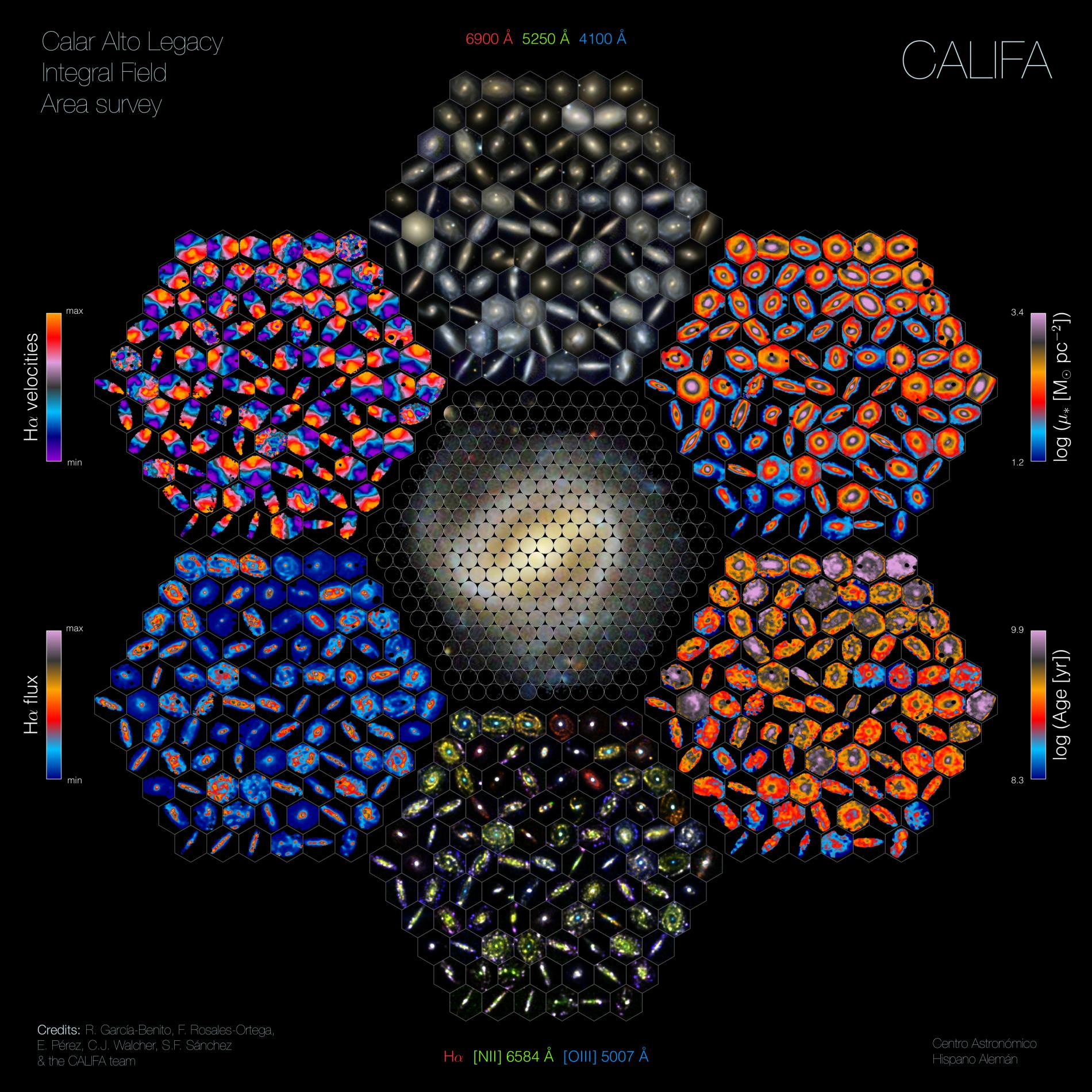CALIFA: an unprecedented view of the local extragalactic universe
Galaxies are the result of an evolutionary process started thousands of million years ago, and their history is coded in their distinct components. The CALIFA project is intended to decode the galaxies’ history in a sort of galactic archaeology, through the 3D observations of a sample of six hundred galaxies.
RESULTS
The CALIFA Project allows not only to inspect the galaxies in detail, but it also provides with data on the evolution of each particular galaxy with time: how much gas and when was it converted into stars along each phase of the galaxy’s life, and how did each region of the galaxies evolve along the more than ten thousand million years of cosmic evolution.
Thanks to the CALIFA data, the astronomers have been able to deduce the history of the mass, luminosity and chemical evolution of the CALIFA sample of galaxies, and thus they have found that more massive galaxies grow faster than less massive ones, and that they form their central regions before the external ones (inside-out mass assembly).

CALIFA has also shed light on how chemical elements needed for file are produced within the galaxies or on the physical processes involved on galactic collisions, and it has even observed the last generation of stars still in their birth cocoon.
“CALIFA is an international Project that will be a reference in the field, for the next decade. This legacy is offered to the scientific community from the Calar Alto observatory, and it evidences the huge potential of the observatory for the top level astrophysical research”, says Prof. José Manuel Vílchez, director of the IAA-CSIC.
A UNIQUE SURVEY
The CALIFA Project, conceived at the IAA-CSIC and carried out at Calar Alto observatory, combines the advantages of two observational techniques: imaging - that provides detailed information on galactic structure - and spectroscopy – that reveals the physical properties of galaxies (kinematics, mass, chemical composition, age, etc).
CALIFA makes use of the IFS technology – Integral Field Spectroscopy – that allows obtaining some one thousand spectra per galaxy, what has resulted in a panoramic view of galaxies. It is the first IFS study explicitly designed as a legacy project, and after completion it will be the greatest IFS study ever accomplished. This project, unique in the world, has been possible thanks to the combination of the light collecting power of the 3.5m telescope at Calar Alto, to the large field-of-view of the spectrograph PMAS/PPAK, and to the granting of 250 observing nights offered by the owner institutions CSIC and MPG.
Calar Alto observatory is operated jointly by the Instituto de Astrofísica de Andalucía (IAA-CSIC, Granada Spain) and the Max-Planck-Institut für Astronomie (MPIA, Heidelberg, Germany). The observatory grants two hundred observing nights (along three years) for the CALIFA survey with the 3.5m reflector Telescope, and it supports the data acquisition, reduction and storage.